"If we do something which is pioneering, we will get arrows in the back. But at the end of the day, a whole lot of people will have a whole lot of fun."
Randy Pausch
-
Chris Hoffman
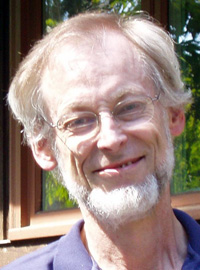
Q: How did you meet/know Randy?
A: I am professor of computer science at Purdue University and my research deals with geometric computing. It overlaps to some extent with computer graphics, the research area of Randy Pausch. I met Randy many years ago at a Siggraph program committee meeting. At the time he impressed me with his charismatic style and engagement. I did not hear from him again until October of 2006 when his colleague, Prof. Jessica Hodgins, sent me the following email:
Christoph,
I'd like to introduce you to a good friend of mine, Randy Pausch. He was recently diagnosed with pancreatic cancer and as we were educating ourselves about the treatment options, we came across your very informative web page.
His surgery was four weeks ago, so now is the decision point for further treatment. He's looking into the MD Anderson protocol that you did since it still appears to be one of the few good options available.
Would you have the time and energy to talk with us about what your experience with the protocol was?Jessica had been editor-in-chief of the premier graphics journal “ACM Transactions on Graphics” and I was on the editorial board. So I interacted with her quite a bit over the years. The reason she contacted me about Randy was that I had had pancreatic cancer in 2004 and had gone to M.D.Anderson Cancer Center in Houston for the post-surgical treatment. I had enrolled in an experimental treatment, and had written about my experience on my web pages (http://www.cs.purdue.edu/homes/cmh/cancer.htm). This protocol that I underwent remains one of the best for pancreatic cancer, but it is rigorous. Randy elected to enroll in the same protocol that year. Unfortunately his cancer returned after completing the treatment, in 2007. We corresponded by email during his treatment in Houston (it is difficult to endure the side-effects of the therapy) and afterwards Jessica and I discussed treatment options for the recurrence with Randy.
Q: What made Randy unique?
A: An unusual quality of Randy, as I have experienced him, was his caring and nurturing of family and friends. He considered it more important to provide for his family than to begin his second round of treatment - a very rare trait and a choice that not many would make.
Q: Can you share a particularly interesting story or memory you have about/with Randy?
A: The interaction we had, on occasion of the cancer and its progression, was in part encouragement, as cancer treatments are rather unpleasant and have toxic side effects that are hard to bear. In part, it was also discussing and researching treatment options. So that is pretty heavy stuff. There were not many moments of lighter spirit, except perhaps the following email exchange. We had been discussing the odds of getting into remission after the cancer had returned and whether it is reasonable to hope for some luck. Randy wrote:
Well, we both have Ph.D.s, so the obvious answer is that you were in a bucket where 15% of the people make it to 5 years, and I'm in a bucket where 0% makes it to five years. … it's one thing to say: "Eat your veggies and you'll be 6 feet tall when you grow up." It's another to say "Eat your veggies and you'll be 7 feet tall when you grow up." Both are possible, of course.
To which I replied:
The 0% bothers me; epsilon % is what I am hoping for. Btw, I am 6’6” -
Mk Haley
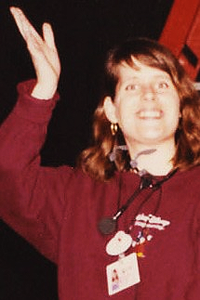
Q: How did you meet/know Randy?
A: I met Randy in early 1995 when he came to Disney as a professor on sabbatical. He was doing research in Virtual Reality and software tools for young programmers. We worked very closely on the same team. He was doing research on a project I had already spent about a year with, so I was his subject matter expert in regard to guest interaction with Virtual Reality. He was very interested in not just the technology behind the attraction in development, but also how guests engaged with this new type of technology. We shared an office (corner of a huge open room, really) and became very good friends. The result of that first research project of his was this paper published at SIGGRAPH 1996 http://www.mendeley.com/research/disneys-aladdin-first-steps-toward-storytelling-in-virtual-reality/
Disney offered Randy a job after his sabbatical, and he worked about one week a month for Disney, and then the rest of the time for Carnegie Mellon University, where he was setting up a new program in Entertainment Technology, based upon how he had seen Disney's design and working models. We worked closely on a large array of projects related to Virtual Reality and other emerging technologies as storytelling devices in our theme parks. His unique specialty was user interaction, and he spent a lot of time helping us develop load and unload systems that shaved significant time off of guest wait times as it streamlined the processes for us. It involved a lot of guest testing and clipboards and surveys and stopwatches. We spent a good amount of time talking about what he hoped his graduate program at CMU would develop into, and he modeled it primarily off of the way our teams at Disney were set up. Artists and Engineers working together, in teams.
Randy's program at CMU became the Entertainment Technology Center offering a graduate degree, a Masters in Entertainment Technology http://www.etc.cmu.edu/, and I was invited to serve as an adjunct faculty with the program. This meant that I continued to work full time at Disney, but once a year I did a lecture series for his students in Pittsburgh. Meanwhile we both began working more closely on other projects as well, both volunteering for SIGGRAPH, an industry association for Computer Graphics and Interactive Technologies.
I have a BFA and an MFA in Computer Animation and Design, from The University of Mass and Cal State LA. I went to High School in Hingham MA, at Notre Dame Academy. I started work at Disney as an intern while I was in grad school, and never left. I was a finalist in a student design competition they have http://disneyimaginations.com/, and I won an internship as a result, with my first project being the Aladdin's Magic Carpet Virtual Reality experience that we were installing at EPCOT Center in Florida. This was also the project that Randy joined about a year later.
The "last lecture" was a series that CMU already had, it invited professors to pretend that if they were giving their last lecture, what might they say? But Randy was not pretending. He knew it was going to be his last, for his pancreatic cancer was back, and likely to only get worse. Randy took the opportunity to write a love letter to his kids, to just honestly talk about what his childhood dreams were, and what he did to get there.
Q: What made the Randy and Last Lecture something so special?
A: I think one of the reasons the Last Lecture was such a huge hit was not that it was anything revolutionary. It’s not really. But rather it all seemed so achievable. It was not super hard things Randy had done, or that he was asking anyone else to do. It was rather ordinary plugging away at what you could do. And it was so devoid of emotion. For a man on his deathbed, it was very straightforward, no sentimentality, nothing drippy, it was just very matter of fact. And I believe that resonated with people as less about cheerleading and more about just doing. And the awesome power of what just doing could do, not only for his own personal dreams, but in helping others achieve theirs. The nickname for his program at CMU is now "The Dream Fulfillment Factory".
For myself, the lecture and then book has affected me to be a constant reminder that you can always choose to do the right thing. Randy left a good job for what better served his goals of a new educational paradigm. It was risky, and hard, and it paid off, and part of his legacy is that it continues to do so. I was stunned to get a call from Bob Iger (CEO of Disney) one day in my office at Disney. Disney (Hyperion) was interested in publishing the book. Time was of the essence of course, as he was dying, and there were almost a dozen offers on the table. Mr. Iger had heard that Randy and I were friends, and asked that I speak to Randy about the opportunities that signing with Disney would give. I was having dinner with Randy that night (he was back in LA to film his scene in the new Star Trek - "captain we have visual" http://www.youtube.com/watch?v=pqFyY5f8Zmw) and we talked about the many offers he had. He mentioned "Everyone wants to throw more money at me, it’s not about money." So we talked about what IT was about. He wanted to be secure that his wife Jai would retain full control of all his intellectual property after he passed. He wanted Disney to publicly support his work in computer science for girls by donating to the Alice project. And he wanted to hide something in the parks for his kids to remind them every time they visited, that Dad had left something for them. Of course, these were so very easy to do for him. It’s just that nobody ever asked what he as an individual wanted for him and his family beyond just money.
Here is an image of the opening day at WDW for the installation we did in remembrance of him. It shows Bruce Vaughn, head of Imagineering, Bob Iger head of Disney, Jai Pausch, his kids, and Jessica Hodgins, Randy's best friend who helped he and his family through much of his illness. She was a friend from grad school, also faculty at CMU, and currently my boss at Disney Research in Pittsburgh. http://news.cs.cmu.edu/photos/d/disney_pausch1_b.jpg Here is a quote from Randy that is on display at the installation. http://thedisneyblog.com/wp-content/uploads/2009/02/rp01-425.jpg and the installation itself, http://land.allears.net/blogs/jackspence/Tea%20Cups%2008.jpg a hedge topiary thingie with with characters from Alive in Wonderland (his favorite story, and the name of his software http://www.alice.org/)
Randy continues to influence people not only through his video and book, but also through the program and through the alumni who have come through it. It's still very rare for a program to not only combine creative and technical talent to study and build things together than none of them could alone, but to also care about HOW the work was done, not just the end product itself. We grade 50%, on our student’s process, communication, time management, and integrity so that when our graduates go into the workforce, they are not just technically proficient, but they are solid citizens making the world a better place as a result of how they interact with it. And that is a lesson that just keeps growing as they each teach their new teams. Randy's influence continues to spread long after his death.
Q: What is something that Randy taught you?
A: One lesson that Randy taught that I can't do with the drama, is the lecture on team work. I currently co-teach the Building Virtual Worlds class that Randy started, and a huge part of the foundation of our program. http://bvw.etc.cmu.edu/ It’s all about team work. We give a big lecture, examples, lots of background and history on teamwork, and how hard it is. Then we assign the class into teams. The next class meeting we feign horror, absolute horror when NONE of the new teams sit together. It’s an important lesson on how non-intuitive what we are doing actually is. T-eamwork is hard, foreign, and requires a lot of conscious work. Randy used to be enraged at this class session, storming out of the room and demanding that when he returned everyone be sitting with their teams. Jesse and I can't work ourselves into that sort of lather. After all, we are not actually surprised; it’s more startling if a team actually did sit together. We do make sure the class knows that Randy would have been pissed, whichleaves them in awe...... Quoting a legend still has its advantages!
I think Randy's most enduring legacy may be optimism. It’s simple, but he makes everything seem possible and worthwhile, and that alone has inspired a lot of people to take action.
Q: Can you share a particularly interesting story or memory you have about/with Randy?
A: Randy and I shared an office (actually a corner of a large warehouse type of space; we shared a huge canvas umbrella that was meant to keep water off our computers if the sprinkler system ever turned on.) One day another engineer walked over to our space and was giving Randy a bit of grief about his work not being "real." He was doing a lot of research with us on efficiency. How long did it take to load guests onto the Magic Carpet ride if we did it one way versus another? So it was a lot of work with clipboards and stopwatches. This other engineer accused Randy of not actually adding value, because he did not make or design stuff; he just worked with stuff that other people had made or designed. And in fact, because he was publishing research on the topic, was stealing the thunder of other people's effort.
This did not upset Randy in the least. He was very happy to be doing what he was doing. He pointed to a picture on his desk and said "that is what I make." It was two children, in those horrible yellow rain ponchos from Disney World, in the teacups, and both looking at something out of frame and shrieking in delight. The two kids (his niece and nephew) had just seen the dormouse that pops out of the teapot for the first time and they were thrilled. He said that the look on their faces, and that of any guest, was his work product. And he was happy to contribute to that look (joy, fear, anticipation, whatever) in whatever way was most needed. Right now, it was efficiency research. He had no interest in glory over a physical artifact, or something that you could touch. He was delighted rather to have been able to touch someone.
-
Jesse Schell
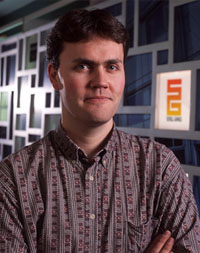
Q: How long did you know Randy and how did you meet?
A: Randy and I met in 1995. When he started his sabbatical at Disney, I was assigned to help him out, and to "keep him out of trouble." We worked together for most of his sabbatical, and then we stayed in touch. He started inviting me to join him at conferences, where we would give talks together, because he was convinced I had interesting things to say. When he and Don started in the ETC in the late nineties, I started hiring interns from it at Disney, and I was very impressed. In 2002, I inquired of Randy whether I might be able to teach there, and it worked out!
Q: What are your opinion/thoughts on how Randy changed the world?
A: I think that Randy did a number of meaningful things. His early work on Alice was incredibly pioneering, and has been the inspiration for many people to find ways to get kids interested in computer programming. The founding of the ETC was monumental, in my mind -- I have been there ten years now, and have seen the difference it has made in the careers of some of the most interesting people in the video game world. And, arguably, the last lecture was his greatest contribution, inspiring millions of people to make the most of their lives.
Q: Can you share a particularly interesting story or memory you have about/with Randy?
A: My memories about Randy have been captured on video. First, here are the stories I told at his memorial service: http://www.youtube.com/watch?v=gBxWO20OkbY#t=57m0
And second, at the annual BVW (Building Virtual Worlds) show, Randy always enjoyed choosing guests for experiences by tossing a beanbag into the audience to choose someone at random. The final year he taught the class, 2005, (he was not yet sick, just for context), I teamed up with the students to surprise him with a special world during the show. Often, when making suggestions to the students about a world that would be fun to make, he would suggest that "building a gingerbread house" would be fun. But somehow, no one ever picked that. We built a custom world that did just that, and let him experience it onstage. Then we gave him some unique gifts. The photomosaic now hangs on the wall outside the Randy Pausch Interdisciplinary Studio at the ETC, next to the rocket ship he once painted on his bedroom wall.
What I really like about this video is you can see the love that everyone had for Randy and how humble he was about it, even well before he had problems with his health. http://www.youtube.com/watch?v=qbtuEpVJRsw
-
Don Marinelli
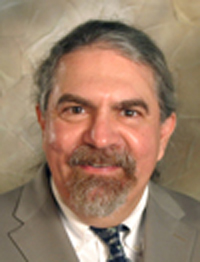
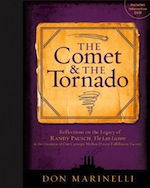
Unfortunately, an interview could not be provided from Mr. Marinelli. However, Mr. Marinelli is the author of The Comet and the Tornado, which takes an intimate look at the relationship between a drama professor (Mr. Marinelli) and a computer scientist (Randy). Included with the book is also a CD which presents a Question and Answer session with Mr. Marinelli about Randy, the ETC, and himself.
| Randy's Personal Blog | Carnegie Mellon University | Last Lecture Website | © Olivia Myngan Lauren |